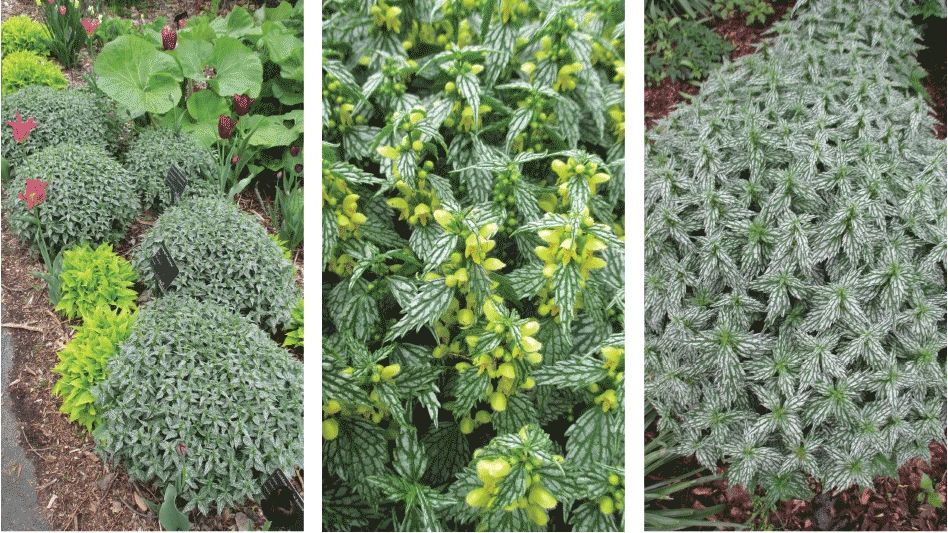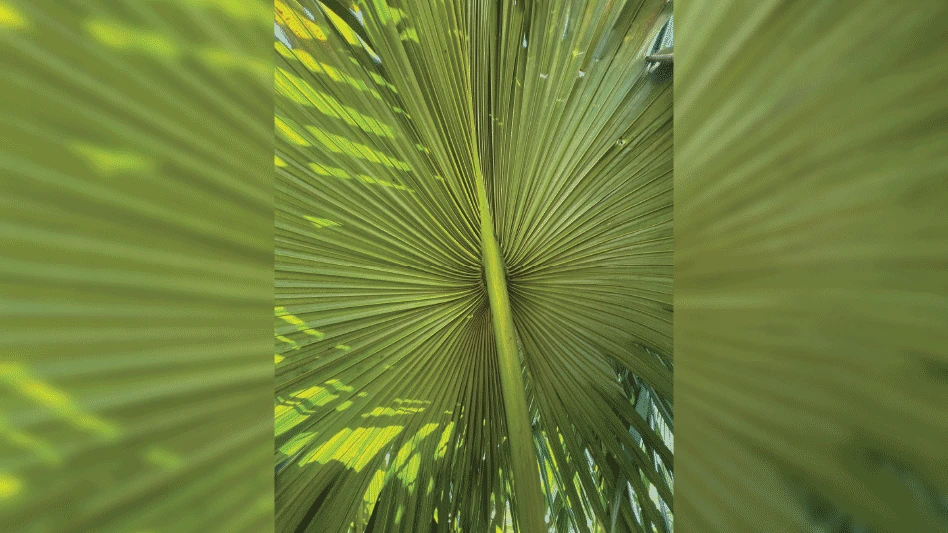 Yes, we have no bananas,” is something said by many temperate zone gardeners. Yet it does not have to be so. Some bananas are hardier than you might think, since gardeners in the United States can grow many cultivars outdoors with just a little protection. There are several bananas that are even cold hardy into and north of USDA Hardiness Zone 7. Regardless of your climate, you can always enjoy bananas in containers or as tender perennials.
Yes, we have no bananas,” is something said by many temperate zone gardeners. Yet it does not have to be so. Some bananas are hardier than you might think, since gardeners in the United States can grow many cultivars outdoors with just a little protection. There are several bananas that are even cold hardy into and north of USDA Hardiness Zone 7. Regardless of your climate, you can always enjoy bananas in containers or as tender perennials.
For amazing, tropical, bold-textured foliage and exotic flowers in the garden (plus perhaps some edible fruit), try growing a banana ... you just might develop a taste for them.
Banana “trees” are tropical herbaceous perennials (not real trees) in the family Musaceae, although the game of rearranging plant families continues as we learn more about plant relationships from DNA testing. Within the family Musaceae, there are three genera of bananas; Ensete, Musa and Musella.
Bananas are native to Southeast Asia, China, Madagascar and Africa. Forty million years ago, bananas were also native to North America as far north as Oregon, so they should be included in a native plant garden.
In the landscape
Bananas should be planted well after the average last frost date. Care should be taken not to expose new plants to temperatures below 57°F, which will greatly slow the growth. Bananas may be safely planted at any time during the growing season up until approximately 10 weeks prior to the average first frost date.
Most bananas prefer full sun, although a few varieties with variegated leaves will need a bit of shade to prevent leaf scorch.
Bananas will grow happily in a wide range of garden soils, but will perform best in a deep, well-drained, organically amended soil. In containers, a well-balanced slow-release fertilizer is perfect.
Bananas (even the cold tolerant ones) prefer warm humid temperatures for maximum growth. They grow fastest when the daytime highs are 80°F to 95°F.
Bananas are unusually sensitive to strong winds, and the large leaves are easily damaged by wind or by hail.
 Banana propagation
Banana propagation
Musa and Musella are easy to propagate from divisions. Collect the suckers that form, taking care to include some roots, then allow the cut surface to dry for a day before repotting. Leave one or two suckers in the ground to replace your plant in case it dies for some reason. Unfortunately, Ensete almost never produces offsets unless the rhizome is injured.
If you are lucky enough to get ripe fruit, then you can collect the seed, clean off the pulp, soak them in warm water over night and sow them immediately. Seed will germinate in 2 weeks to 6 months depending on cultivar. Keep the seedling out of full sun until the first true leaf has emerged.
Most commercially produced ornamental bananas are propagated via tissue culture, using shoot tips as the source material.
Banana trials
At Plant Delights Nursery and Juniper Level Botanic Garden, we continue to grow and trial a wide variety of cold-tolerant (in USDA zone 7 or 8 at least) species and cultivars of banana. The information below is a result of our trials.
Ensete
Ensete is a genus of very ornamental non-offsetting bananas, most of which are only reliably hardy from Zone 8 south. Ensete grows best in full sun.
- Ensete glaucum (snow banana or elephant hip banana)
The snow banana hails from up to 8800 feet elevation in the Himalayas. The 10-foot tall, thick bluish trunks support the giant bluish green leaves. Although Ensete glaucum does produce bananas, we are uncertain of their edibility. What we do know is that the blue cast of the plant makes this a stunning ornamental banana for the garden. (Zone 8b-10)
- Ensete maurelii (Abyssinian banana)
We have long been amazed at this superb ornamental banana from the high mountains of East Africa. Growing to only 10 feet tall in temperate climates (20 feet tall in tropical areas), E. maurelii makes a superb ornamental for the summer border. Each leaf can reach gigantic proportions of 10 feet long. The most ornamental characteristic is that the foliage is flushed with burgundy-red, especially concentrated as the new growth emerges. The higher the light levels, the stronger the coloration. In Zone 7b, it overwinters well for us if we cover the pseudostem with a 2-foot pile of shredded leaves after the first frost. (Zone 8-10)
- Ensete perrieri (Perrier’s banana)
E. perrieri is a little-known species of Ensete from Madagascar with a robust, beautifully bluish-waxy pseudostem that is distinctly swollen at the base. The straight, ascending leaves with yellowish midribs are held on very short stalks and form a shuttlecock-like crown. The large maroon flower is held on a short spike above the foliage. (Hardiness unknown)
- Ensete superbum (cliff banana)
E. superbum may reach 12 feet tall with 12-foot long massive leaves. The short pseudostem has a swollen base of up to 8 feet in circumference at the base. The leaves are bright green on both sides with a deeply grooved and short petiole. The upper parts of the plant die out during a dry season which may give this plant more drought tolerance than other bananas. (Zone 8b-10)
 Musa
Musa
We are not going to attempt to cover the massive number of Musa species or cultivars, but will only a focus on a few that we have found to make great specimens. Most Musa prefer full to part sun, but full sun and very dry soils aren’t a good combination.
- Musa basjoo (Japanese fiber banana)
Recent research has shown that M. basjoo, the world’s hardiest banana species, is actually from Sichuan, China and not Japan. This 16- to 20-foot tall running species makes a thick, green stem that sports 6-foot long, narrow, green leaves arching from the top of the trunk. The flower emerges from near the top of the stem like a yellow-orange torpedo. Clusters of small, yellow, 2-inch long bananas appear after the flowers. Forget eating this one ... just enjoy the tropical look and tease your neighbors. We recommend a good mulch in colder regions until the clump becomes well-established. There are hardiness reports that M. basjoo is hardy as far north as Zone 4, but we have been unable to substantiate this with reliable temperature data. (Zone 7-10, probably colder)
- Musa ornata (purple flower form) (bronze banana)
This dwarf, fast-multiplying Indian species is prized as a container plant because of its 5- to 8-foot tall size. The clump is adorned in late summer and early fall with upright flower spikes of lilac-purple flower buds that peel open in layers, revealing the golden yellow flowers. Forget eating this seed-filled banana unless your spouse kicks you out of the house without dinner. Reports indicate that it is reliable in Zone 8 and possibly further north.
- Musa sikkimensis (darjeeling banana, Indian banana, sikkim banana), (syn: Musa hookeri)
M. sikkimensis hails from the northeast Himalayas. Reportedly, the trunks can reach 14 feet in height (ours tops out at 10 feet tall) with a diameter of 18 inches. The leaf backs emerge a dazzling cinnamon-red. To say these bananas are edible is about like saying that Himalayan bathrooms are comfortable ... both have an aroma, but that’s about it. (Zone 7b-10)
- Musa sikkimensis ‘Red Flash’
This seed strain of M. sikkimensis has a maroon mid-rib, maroon sectors on the top of the leaf and a totally maroon reverse side. The leaves are contrasted by the yellow flower. We have not found this to be a reliable leaf pattern from seed, so if you purchase a plant sight unseen, be sure the vendor is reputable. (Zone 7b-10)

- Musa textilis (abacá banana)
M. textilis is commercially grown in the Philippines for its tough fibers that are used in ropes. It grows to 20 feet tall in the tropics, but our plants have topped out between 8-10 feet tall. M. textilis has typical long narrow green leaves with a striking purple/mauve flower, and the pseudostem has a nice glaucous cast. (Zone 7b-10)
- Musa thomsonii (Thompson’s edible banana)
This Himalayan species grows to 15 feet tall, but our plants have topped out with 12-foot glaucous grey stems. The new leaves often have a red flush on the reverse side. We have had our plants in the ground since 2007, and they have survived 9°F without mulch. (Zone 7b-10)
- Musa velutina (pink velvet banana)
There’s something mystical about a pink velvet banana that makes you want to start belting out Elvis tunes. M. velutina was our first introduction to hardy bananas and is still a favorite in our summer garden. Rarely exceeding 6 feet tall, M. velutina produces copious flower stalks near the top of the trunk, starting in late summer. Each stalk is soon home to clusters of small, pink velvet bananas. Don’t plan on a snack from these seed-filled bananas unless you are exceedingly hungry or exceedingly drunk. Once established, they seem to be quite winter-hardy. Not all strains of M. velutina are equally winter hardy. (Zone 7b-10)
- Musa yunnanensis (yunnan banana)
M. yunnanensis hails from 8,000-feet elevation in Yunnan, China, and has proven to be an excellent choice for temperate gardens. For us, this giant reaches 16-20 feet tall during the growing season despite being killed to the ground in winter. Our plants have been in the ground since 2006 and have overwintered at 8°F with no mulch. (Zone 7b-10)
Musella
Musella lasiocarpa (golden lotus banana, Chinese dwarf banana)
This magnificent ornamental banana is more of a shrub than the typical taller banana. The stiff, thick, leathery, grey-green, banana-like foliage is borne atop a stalk that can eventually reach 6 feet tall. Instead of being prized for its fruit, this plant is grown more for its flowers. Each specimen is home to large, bizarrely beautiful, yellow flowers that look like giant golden artichokes. Our plants have sailed through over a decade of winters and without any mulch. (Zone 7-10)
Tony Avent is owner of Plant Delights Nursery, www.plantdelights.com. Dennis Carey is a horticulturist and author from North Carolina.
Get curated news on YOUR industry.
Enter your email to receive our newsletters.
Explore the April 2012 Issue
Check out more from this issue and find your next story to read.
Latest from Nursery Management
- NewGen Boxwood added to Proven Winners ColorChoice line
- Terra Nova releases new echinacea variety, 'Fringe Festival'
- American Horticultural Society names winners of 2025 AHS Book Awards
- Nufarm announces unified brand
- American Horticultural Society announces winners of 2025 Great American Gardeners Awards
- Shifting the urban environment
- The Growth Industry Episode 3: Across the Pond with Neville Stein
- What's in a name?






